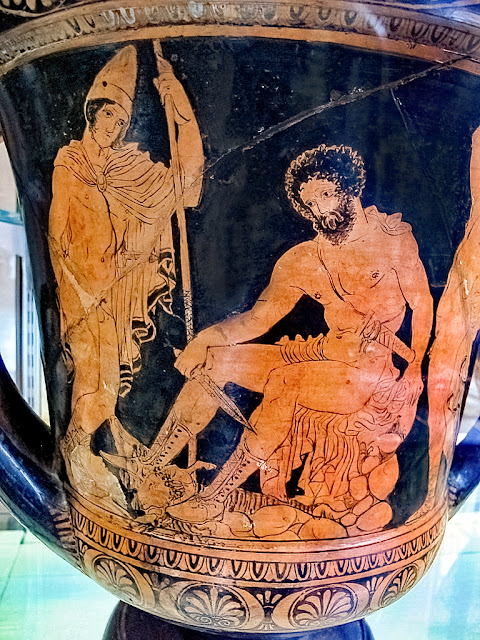Tiresias, Soothsayer extraordinaire
In Greek mythology, Tiresias was a blind prophet of Apollo in Thebes, famous for clairvoyance and for being transformed into a woman for seven years. Like other oracles, how Tiresias obtained his information varied: sometimes, he would receive visions, other times he would listen for the songs of birds, or ask for a description of visions and pictures appearing within the smoke of burnt offerings or entrails, and so interpret them. Pliny the Elder credits Tiresias with the invention of augury. In his text De Divinatione, Cicero admits several other nations besides the Romans paid attention to the patterns of flying birds as signs from the gods as well. Tiresias became a common title for soothsayers throughout Greek legendary history.
According to the mythographic compendium Bibliotheke, different stories were told of the cause of Tiresias' blindness, the most direct being that he was simply blinded by the gods for revealing their secrets. An alternative story told by Pherecydes was followed in Callimachus' poem "The Bathing of Pallas". In it, Tiresias was blinded by Athena after he stumbled onto her bathing naked. His mother, Chariclo, a nymph of Athena, begged Athena to undo her curse, but the goddess could not. Instead, she cleaned his ears, giving him the ability to understand birdsong, thus the gift of augury. In a separate episode, Tiresias was drawn into an argument between Hera and her husband Zeus, on the theme of who has more pleasure in sex: the man, as Hera claimed, or, as Zeus claimed, the woman. As Tiresias had experienced both, Tiresias replied, "Of ten parts a man enjoys one only." Hera instantly struck him blind for his impiety. Zeus could do nothing to stop her or reverse her curse, but in recompense he did give Tiresias the gift of foresight and a lifespan of seven lives.
Tiresias makes a dramatic appearance in the Odyssey, book XI, in which Odysseus calls up the spirits of the dead (the nekyia). "So sentient is Tiresias, even in death," observes Marina Warner "that he comes up to Odysseus and recognizes him and calls him by name before he has drunk the black blood of the sacrifice. Even Odysseus' own mother cannot accomplish this, but must drink deep before her ghost can see her son for himself." Tiresias tells Odysseus how to get past Scylla and Charybdis. He even gave him advice where he should not eat the cattle of Helios on Thrinacia (advice which Odysseus' men did not follow, which led to them getting killed by Zeus' thunderbolts during a storm).
 |
| Silver, two-handled cup with relief decoration depicting Tiresias and Odysseus (here) on one side and a group of philosophers on the other, Roman 25 BCE-100 CE, courtesy of the J. Paul Getty Museum. |






Comments
Post a Comment